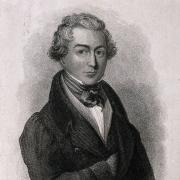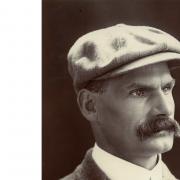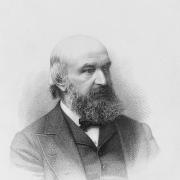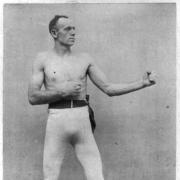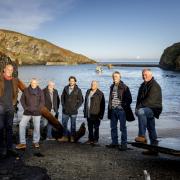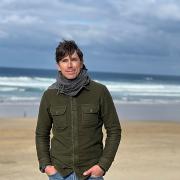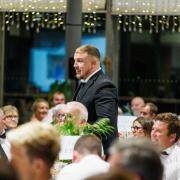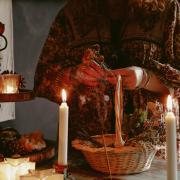It has been a poignant year for everyone connected with the Penlee Lifeboat Station and the disaster that took the lives of eight of their crew men just before Christmas 40 years ago - and the local lifeboatmen and women continue to save lives.
On 19 December 1981, the coaster Union Star was making its maiden voyage from the Netherlands to Ireland with a cargo of fertiliser. It met with a fierce storm in the English Channel and after its engines failed and the vessel started to be swept inexorably towards the rocky Cornwall coast, the captain contacted the Falmouth Coastguard for help.
Initially a Sea King helicopter was scrambled to rescue the eight people aboard but an airlift proved impossible and the Penlee lifeboat, Solomon Browne, was launched instead.
Battling a Force 12 gale, 90 mile per hour winds and 18 metre high waves, the lifeboat managed to take up shaky position alongside the stricken ship and, against all the odds, took off four people. The helicopter departed, while the lifeboat crew made a final brave attempt to rescue the remaining four.

But then suddenly all radio contact between the lifeboat and shore cut out. The helicopter urgently refuelled and returned to sea to search for the Solomon Browne, joined by hastily launched lifeboats from Sennen Cove, Lizard and St Mary’s on Scilly, but the frantic effort met with no success. And at daybreak the following morning, the Union Star was found capsized on rocks near Tater Du Lighthouse and wreckage of the lifeboat was starting to come ashore. There were no survivors from that night. Alongside the eight volunteer lifeboatmen, the five crew of the Union Star and three passengers were lost.

In August, the tragedy was respectfully marked by a flotilla of lifeboats, both old and contemporary, assembling at Penlee Point. The names of those who lost their lives were read out from the station slipway, while a wreath was laid in remembrance on the waters from one of today’s Penlee operational lifeboats, the Severn Class vessel named Ivan Ellen. The RNLI felt marking the loss on the actual anniversary would be too painful for those who lost loved ones.
In the aftermath of the disaster, Coxswain Trevelyan Richards was posthumously awarded the RNLI gold medal, while the remainder of the crew were all posthumously awarded bronze medals. The station itself was awarded a gold medal service plaque. The disaster prompted a massive public appeal for the benefit of the village of Mousehole which raised more than £3 million

Among those on board was coxswain Patch Harvey. 'It was a day I’ll never forget,' he says. 'I’m not directly linked to any of those who died but I felt emotional and humbled.'
Patch lives in Newlyn and has solid fishing ancestry on both sides of his family. He has been a fisherman himself for 20 years. In 1993 he joined the RNLI. 'I was walking past the lifeboat station one day and literally got called over and asked whether I’d like to join. I said: ‘Yes please.’” In 2008 he became full-time coxswain with two lifeboats at his disposal, now at a new station at Newlyn. Touchingly though, the station is still known as Penlee.
The Severn Class lifeboat at the station is the largest boat in service with the RNLI. It is classed an all-weather vessel, which means it is expected to be able to face anything the elements can throw at it. 'It’s often used to help fishing boats and larger craft out at sea and can be busy in winter,” says Patch. 'There are 120 fishing boats that work out of Newlyn and engine failures do occur.'

Also based at the station is a state-of-the-art Atlantic 85 ‘B’ class rigid inflatable, which responds to people getting into difficulties inshore, including kayakers, jet skiers and swimmers. 'It’s for call-outs where very rapid assistance is needed and this is the lifeboat that is most likely to save a life.'
Most rescues or ‘shouts’ start with a 999 call to the coastguard, when a tasking request is immediately sent to crew. They drop whatever they are doing – work or leisure – and head straight for the boathouse. Meanwhile the launch authority talks to the coastguard to decide which lifeboat is more suitable for the occasion. Everything happens very quickly and the average launch time from crew pagers going off to the boat leaving shore is just six minutes.
Some shouts are more memorable than others. One that sticks in Patch’s mind started with a distress call from a merchant vessel called Lady Alida. 'She had suffered engine failure,' recalls Patch. 'Disconcertingly she was of the same size and carrying the same cargo as the Union Star all those years ago. Not only that but she was in the same area and drifting in the same direction. The call came in at 1am and conditions were poor, although nowhere near as bad as they had been back then.
'Together with the Sennen Cove Lifeboat, we worked hard for 11 hours to keep the ship off the rocks until a tug could make it there. It was very demanding physically.'

If that occasion brought difficult emotions with it, many rescues today are altogether different. Another call-out that stays with Patch was to look for a paddle-boarder who was overdue. 'It was November time and he had gone into the water around 5pm in a wet-suit to capture the sunset,' says Patch.
'His family, who were on the beach, called for help around 8pm and we sent out both lifeboats to try to find him. They searched for three hours to no avail and then took a break so the crew could have a hot drink. During that time, the boats fortuitously drifted off-target and when we started looking again we found him at once. He had been in the water for six hours and had severe hypothermia. His heartbeat was just 18 beats a minute and he really couldn’t have lasted much longer.'
Bringing an ordeal to a safe conclusion is all in a day’s work for lifeboat crews but it is important to recognise that most people involved are volunteers. The RNLI itself is a charity and depends on the generosity of the public – over 90 per cent of the organisation’s costs are met by donations.
The services the RNLI provides encompass not just the lifeboats but also a seasonal lifeguard service, coastal safety, research and education programmes, and a flood-response role. There are 238 lifeboat stations alone around the UK and Ireland with a total fleet of over 400 vessels, including those held in reserve. As well as at Penlee, in Cornwall there are lifeboats stationed at Looe, Fowey, Falmouth, Lizard, Sennen Cove, St Ives, St Agnes, Newquay, Padstow, Rock, Port Isaac and Bude and also at St Mary’s on Scilly.
Altogether, £139 million was needed in 2020 to keep the RNLI ready to respond round the clock. But most people would say this is money well spent. The RNLI’s services remain very much in demand, even in an age of advanced marine technology, precise electronic navigation and safety awareness. Together lifeboat crews rescue an average of 23 people per day.
This year has proved particularly busy for crews everywhere, including Penlee. 'We didn’t really know what to expect,' says Patch. 'But of course a lot of people were not holidaying abroad and were heading to our coasts instead. Things were hectic in July and August for us – we had 30 shouts over those two months, which is half our normal yearly total.'
It goes to show that we need our lifeboat service just as much as ever. It is through the dedication of people like Patch Harvey that those of us who want to navigate, explore or enjoy our maritime environment are able to stay safe. It is a comfort to know that they are on hand and ready, despite knowing all too well the danger that the sea can bring them too.
Covid has badly affected RNLI fund-raising, while lifeboat services have remained fully operational. You can make a donation or shop online at www.rnli.org
The new Penlee Lifeboat Station at Newlyn is open to the public and there is also an RNLI gift shop in Penzance. Visit www.rnli-penleelifeboat.org.uk

The old lifeboat station at Penlee Point is no longer in use. It was closed in 1983 and moved to Newlyn. The site of a memorial garden dedicated to those who lost their lives. This Cornwall Life feature is also dedicated to the lifeboat crew who responded on 19 December 1981. They were Trevelyan Richards (coxswain), Stephen Madron (second coxswain and mechanic), Nigel Brockman (assistant mechanic), John Blewett (emergency mechanic), Charles Greenhaugh (crew member), Kevin Smith (crew member), Barrie Torrie (crew member) and Gary Wallis (crew member). They will not be forgotten.
Then and now

Janet Madron
Janet lost her husband Stephen in the disaster in 1981. With Andrew Munson, she laid a wreath at Penlee Point in August. She has devoted much of her life to fund-raising for the RNLI and is currently Lifeboat Management Chair at Penlee Lifeboat Station. Earlier this year she was presented with an RNLI 50 years of service award.
Andrew Munson
Andrew is Lifeboat Operations Manager at Penlee and continues to work hard for the RNLI despite being unwell. He has also received a 50 years of service award and, with Janet Madron, laid a wreath at Penlee Point in August. Forty years ago, he took part in identifying the wreckage of the Solomon Browne and had the role of informing some of the crew members’ families of their loss.

Roy Pascoe
Roy might well have been on the crew of the Solomon Browne on that fateful night in 1981 but could not get to the station in time, which saved his life. He became a Deputy Launch Authority and, with his wife Margaret, now looks after the old lifeboat station and its memorial garden at Penlee Point. He has a 40 years of service award.

Many others served with Penlee RNLI at the time of the tragedy or were affected by the events of that night. Sadly space prevents mention of them all.





